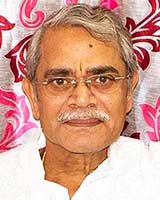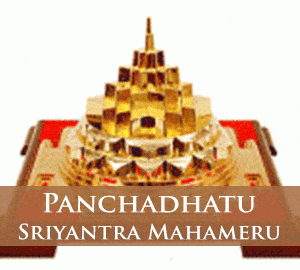The Pratihara Empire
The Palas were one of the most long-lived dynasties of Indian history, but their supremacy in the Gangetic Doab was of short duration. The sceptre of Kanauj was not long wielded by the vassals of Dharmapala, and by AD 836 the Pratihara dynasty was firmly established in the city of Mahodaya (Kanauj). Before the end of the ninth century the power of this new imperial line had extended in all directions and the command of the great Pratihara king was obeyed all over the wide expanse of territory stretching from Pehoa in the Punjab to Deogarh in Central India, and from Una in Kathiawar to Paharpur in North Bengal.
In their epigraphic records the Pratiharas claim descent from the Kshatriya Lakshmana (brother of Rama) of the solar race famed in the Ramayana, and also from a Brahmana named Harichandra. The prevailing view among modern scholars is that they are a branch of the Gurjara race that began to play an important part in Indian history from the sixth century AD. The Gurjaras established principalities in the Punjab, Marwar and Broach. In the seventh century AD they find mention in the Harsha-charita of Bana, the records of Hiuen Tsang and the Aihole inscription of Pulakesin II. About the middle of the eighth century AD certain Gurjara chiefs are represented as serving a Rashtrakuta monarch as Pratihara (door-keeper) at a sacrifice performed at Ujjain. The designation Pratihara probably originated in this way, though a later tradition connects it with Lakshmana, brother of Rama, who guarded the doors of the latter one memorable occasion. The connection of the Pratihara family of Kanauj with Avanti, the district round Ujjain, at some stage in the progress of their power does not seem to be improbable in view of the alleged statement of the Jaina Harivamsa that Vatsaraja, a distinguished member of the line, was a ruler of Avanti. A different interpretation of the passage in question is, however, suggested by some scholars. The founder of Vatsaraja family was Nagabhata I who is usually assigned to the middle of the eighth century AD. He did much to rehabilitate the power of the Gurjaras which was threatened by the Arabs from Sind and the Chalukyas and the Rashtrakutas from the Deccan. Vatsaraja, grandnephew of Nagabhata I, claims to have won the position of Samraj, or emperor, and extended his conquests as far as Bengal, but he was driven to the trackless wilderness by the Rashtrakuta king Dhruva of the Deccan. His son Nagabhata II won some success at first. He is credited with having extended his influence from Sind in the north to the Andhra country in the south, from Anartta in Kathiawar in the west to the borders of Bengal in the east. His most notable achievement was the defeat of Dharmapala, king of Bengal, and the expulsion of his protege Chakrayudha from Kanauj. But he himself sustained defeats at the hands of the Rashtrakutas, the sworn enemies of his line, who had grown very powerful under the vigorous rule of Govinda III.
The Pratihara power recovered under Bhoja 1, grandson of Nagabhata II, who was firmly enthroned at Kanauj in A.D. 836. He extended his power north-wards as far as Pehoa and south-wards as far as the Vindhyas, but his further progress was stopped by Sankaravarman of Kashmir and Dhruva Dharavarsha, a Rashtrakuta chieftain of Broach. He was more successful in the east. The Gaudas (of Bengal) were defeated and the Pratihara empire in the time of his successor stretched as far as Paharpur in North Bengal. The empire of Bhoja was visited by the merchant Sulaiman who spoke highly of the strength of his cavalry and of the peace that reigned in his kingdom.
Mahendrapala I, son of Bhoja, maintained his father’s empire and seems to have extended it towards the east. He imitated Harsha and Yasovarman in encouraging learning. His court was adorned by the poet Rajasekhara.
Mahendra was followed by his sons Mahipala, Bhoja II and Vinayakapala. Some scholars prefer to identify Mahipala Pratihara with Vinayakapala, but their dates do not overlap. Mahipala maintained his hold on Surashtra or Kathiawar as late as 914 AD. In the next year Al Masudi visited his realm and spoke about his horses and camels. In 917 the Pratihara king was still in possession of the Gangetic Doab. Rajasekhara speaks about his conquests in the most distant regions of India from Kuluta in the north to Kerala in the south. His power was threatened by Indra III, the Rashtrakuta king of the Deccan, who inflicted a severe defeat on him and took Kanauj. Mahipala seems to have been restored by a Chandella king. The dramatist Kshemisvara asserts in his Chandakausika, which he wrote for the Pratihara king, his patron’s triumph over the Karnatas i.e. the Rashtrakutas. But the Pratihara empire does not seem to have fully recovered from the blow it received at the hands of the latter.
The succeeding rulers maintained a precarious hold over the upper Ganges valley, parts of Rajputana and Malwa, but their former feudatories, notably the Chandellas, aggrandised themselves at their cost. The Chalukyas made themselves independent in Gujarat, the Paramaras in Malwa, the Chandellas and Chedis in the country between the Jumna and the Nerbudda. A still more formidable enemy appeared on the scene early in the eleventh century AD. In 1018 Kanauj, then ruled by Rajyapala Pratihara, was taken by Mahmud of Ghazni. The Pratihara dynasty probably continued to rule over a small territory till the second quarter of the eleventh century AD. But their empire was gone and they sank to the position of local chieftains.
The Shahiyas
The Pratiharas in the days of their greatness had defended Hindustan against the Arab invaders. Towards the end of the tenth century the task of defending the northwestern frontier of India devolved on another dynasty, the Shahiyas. The origin of this dynasty which played such an important role in Indian history may be briefly told. A family of Indianized foreigners had been ruling for a long time in the Kabul valley and adjoining regions to the east as far as the Indus. Al-Biruni calls them descendants of Kanishka and they are known as Turkish Shahiyas. About the middle of the ninth century AD king Lagaturman of this dynasty was dethroned by his Brahmana minister named Kallar who has been identified with Lalliya Shahi, highly praised in the Rajatarangini. He and his successors are known as Hindu or Brahmana Shahiyas or Shahis. Their capital, Kabul, being seized by the Suffarid Yaqub in 870 AD, they shifted it to Udabhandapura or Ohind (modern Und), a small village on the right bank of the Sindhu, about fifteen miles above Attock. The Hindu Shahiya kings had political and matrimonial relations with the rulers of Kashmir. The famous queen of this kingdom, Didda, was the daughter’s daughter of the Maharajadhiraja Paramesvara Sahi Sri Bhimadeva. The next important king of this dynasty was Jayapala (or Jaipal) who also assumed imperial titles and ruled over an extensive kingdom stretching from Lamghan in Eastern Afghanistan to Sirhind in the Punjab in the east and Multan in the south.











